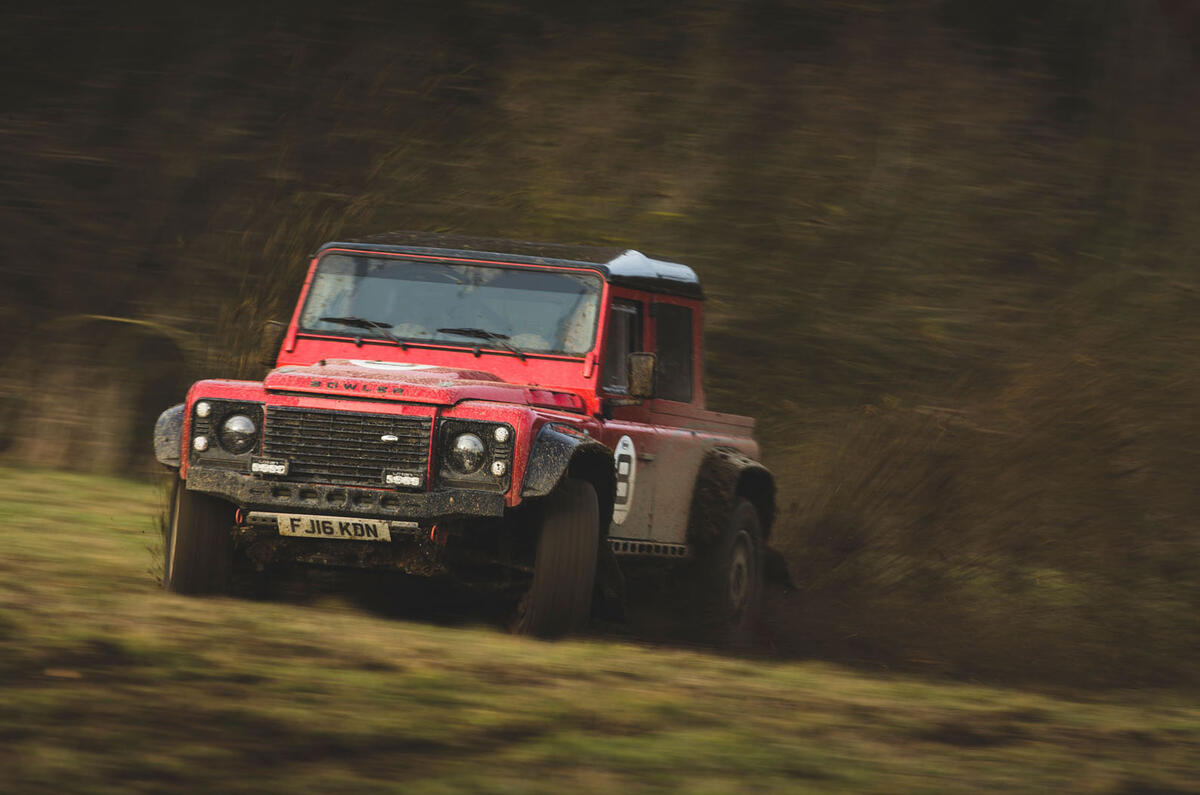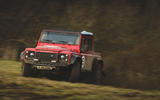What is it?
You look out of the kitchen window and there’s a pterodactyl sitting on the birdbath.
It’s the same effect when the Bowler Bulldog you’ve come to test is parked outside a BP station just off the A14 – straddling two bays, because it has to. Licence plates mean it’s road-legal; everything your eyes tell you seems to contradict that. We’ll come onto the wider implications of this latest V8-engined rally-raid ‘prototype’ in a moment, but that it can concurrently exist as a successful silhouette racer and, quite feasibly, as the basis of a more luxurious road car demonstrates two things.
First is that Derbyshire-based Bowler’s engineering capabilities far outweigh its status as a relative manufacturing minnow – it numbers fewer than 40 employees and builds only 20 or so cars a year. The Bulldog might share its wheelbase with a Defender 110, along with a handful of panels, the upright windscreen and a bit of dashboard trim, but as a percentage, the parts carried over are in the low single figures. Bespoke glassfibre encases a structural roll-cage built to withstand end-over-end crashes in the Moroccan dunes, but the real magic lies deeper, because underneath it all lurks not a ladder-frame chassis but Bowler’s new laser-cut-aluminium cross-sector platform.
During the design phase this chassis underwent six months of finite element analysis, which is why it takes the form of an attractive, intricate latticework with struts that protrude into the cabin and straddle the transmission tunnel. The upshot is that the Bulldog touts a torsional stiffness four times that of a standard Defender – and two-thirds of the way to matching a Bugatti EB110, amazingly – but weighs 200kg less.
Second is that there is a market for useable modified Defenders (or, in the case of the Bulldog, Defender lookalikes) with heroic performance. Bolted onto the Bulldog’s bespoke platform are Range Rover subframes, so while Bowler offers the car with either petrol or diesel V6 (the latter being the popular choice for competition, due to its 1000-mile range with the 225-litre fuel tank), it was always ready to take JLR’s supercharged 5.0-litre V8. And that, unsurprisingly, is the engine eccentric hobbyists of considerable means want. It arrives at Bowler in the same 567bhp tune of the Range Rover Sport SVR – a car half-a-tonne heavier than the Bulldog but still capable of hitting 62mph in 4.3 seconds. As a bellwether for the Bulldog’s performance, we’re now into the uncertain region between excitement and panic.
Elsewhere you’ll find limited-slip differentials for the front and rear axles, the latter being switchable through four modes, and Brembo brakes from the Range Rover Sport. There are further vestiges of Range Rover inside the cabin – the column stalks, gearlever and electronic handbrake are all conspicuously posh – but it’s otherwise no-nonsense, with a Motec display and foam fire extinguisher. The driving position is abrupt but comfortable in an agricultural sort of way, with the pedals set up for left-foot braking. The Cobra buckets seats also sit more central than in a Defender, so wheel-twirling drivers don’t thump their funny bone on the door. Given the Bulldog will cross boulder fields at more than 100mph, that’s an A-star for ergonomics.
































































Join the debate
Add your comment
Cool.
No, Icy cold.
Just sublime.
The best way to burn excess cash if you suffer from that problem....
This is mechanical and cool,
This is mechanical and cool, and so much more interesting and appealing than the other article today about the 7th generation S Class.
I am so sick and bored of reading about shared architecture, more 'tech' crap nobody wants, and great big sticky fingers touch screens. It is killing that spirit of cars and I hate it all. And I hate those moronic moving indicators that started with one-car-fits-all VAG and are now spreading everywhere like a new bubonic attention-seeking plague.
What a jump!
Love the 24th photo, the first after the two of the jumps, with the front number plate bent back and the shot of Richard Lane's manic smile seen through the windscreen with the wipers going!
Fantastic